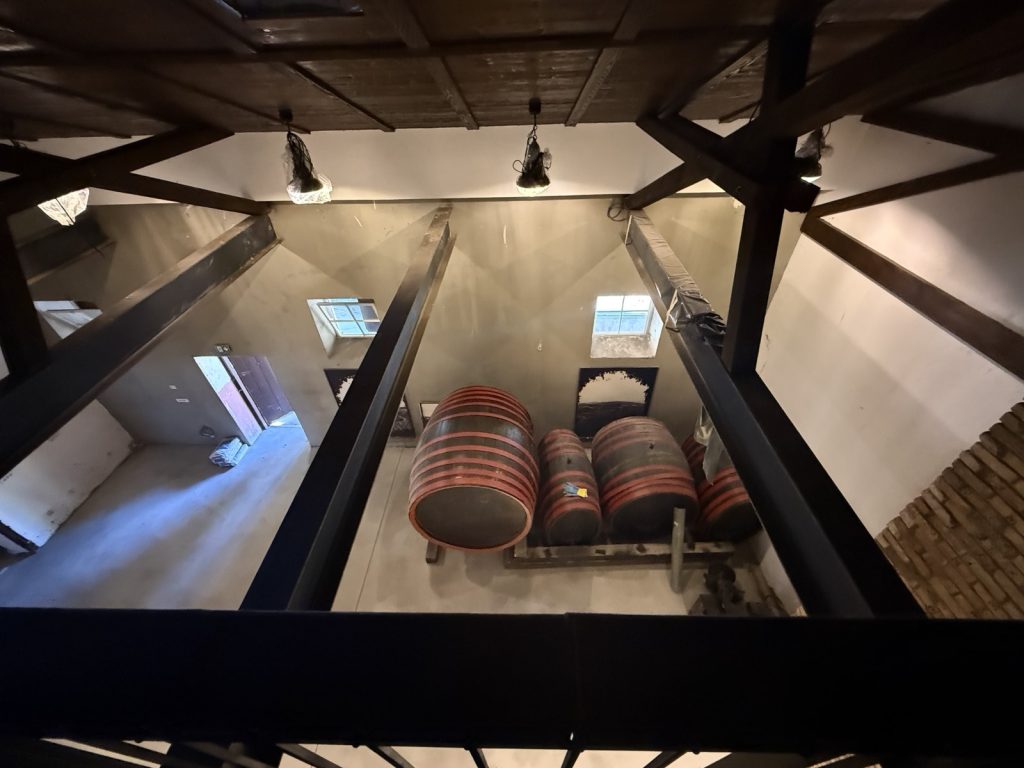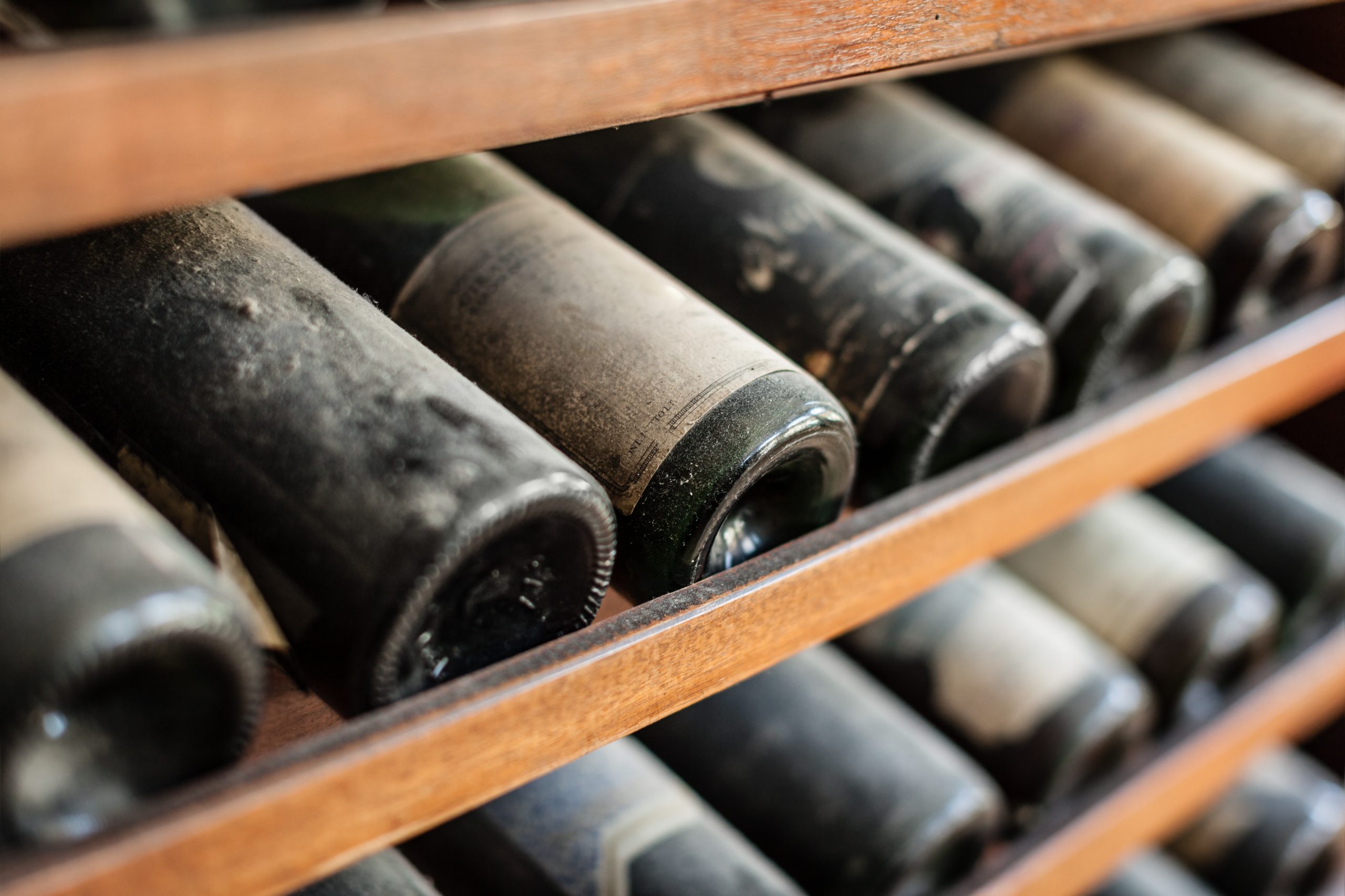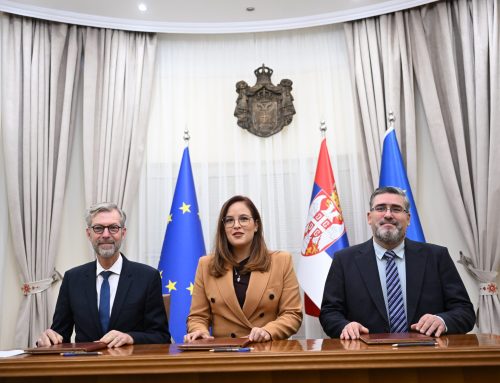The oldest bottle of wine in Serbia is 94 years old and is kept in a cellar 12 meters underground. It is believed to have been filled with white wine by the hand of one of the Serbian kings.
The wines in this collection are locked away on the second underground level, stored behind metal bars on steel shelves. They were poured into glass bottles (then ordered from Italy and the Czech Republic) in three sizes, each embossed with the royal coat of arms. The labels were made by hand and are now so fragile that they must not be touched.
This unique treasure of Serbian wine making is located in Topola, about 70 km from Belgrade, in the King’s Winery. There, evidence shows that one of the oldest Serbian grape variety is – “Zilavka”. By the order of King Alexander I Karađorđevic, the winery was founded in 1931 and became more than just a winery, it was a fusion of progress and Serbia’s cultural identity. Wine was poured, stored, and documented there – closely linked to the state and its values.
Over the decades, the winery declined, but it was never forgotten. Just as the “Zilavka” grape endures despite climatic challenges, the King’s Winery survived thanks to the efforts of those who recognized the cultural value hidden in its cellars and in the story of Serbian vineyards.

King’s Winery in Topola
The restoration of the King’s Winery in Topola is financed by the European Union (EU) under the project “KREST – Cultural Renaissance for a Richer Tourism in Sumadija”, with a value exceeding one million euros. The winery is being rejuvenated and refreshed through the restoration of architectural elements (masonry, stone-cutting, and carpentry work), complete interior design, installation of new lighting, and renewal of the main gate dating from 1931.
The project is implemented by the Regional Agency for Economic Development of Sumadija and Pomoravlje under the EU PRO Plus program. The goal is not only to renovate the space but also to revitalize its role – as a museum, wine archive, educational center, and gathering place for wine lovers and tourists.
Symbolically, “Zilavka” connects the past and the future. It embodies endurance, resilience, and the quiet elegance of viticultural philosophy. The restoration of the King’s Winery would not have full meaning without preserving precisely the local, indigenous varieties that represent the identity of the region.
EU support to Serbia goes in that same direction to strengthen the economy while also contributing to the preservation of identity through investments in sustainable cultural tourism. Within the broader European policy of territorial development, investments in viticulture, preservation of traditional varieties, and integration with tourism are considered part of a single strategy. “Zilavka” has become a symbol of an approach to development that is not based solely on market principles but on preserving what makes Serbia unique.
This wine shines in the glass with a golden-green color, combining the minerality of limestone with notes of honey, almonds, and wild herbs. On the palate, “Zilavka” is dry, full-bodied, and powerful yet balanced, with alcohol content between 13–14% and pronounced acidity that gives it freshness.
And the next time you visit Topola and walk past the restored gates of the King’s Winery, remember: behind those metal doors lies not just wine. Time, identity, and the lasting, quiet taste of “Zilavka” are preserved there.
__________________________________________________________________________________________
The EU supports Serbian wine producers in strengthening competitiveness, aligning with EU regulations, and developing the wine industry. This enables winemakers to achieve better market positions, easier exports, and compliance with standards that apply across the EU’s common market. Support also includes vineyard monitoring and registration, grape variety certification, and the application of hygiene and safety standards in wine production.
Since 2017, the EU made available 463 million euros in Serbian agriculture through the IPARD program, with an additional 150 million euros of support provided since 2001.




